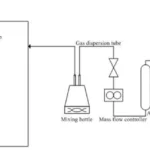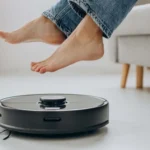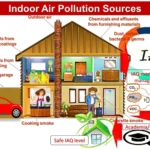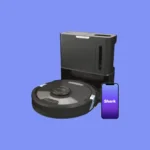Imagine living in a world where everyday activities such as dusting, vacuuming or simply being in a dusty room could trigger a life-threatening asthma or COPD attack. For millions of people around the world, this is their stark reality. Asthma and COPD often go hand-in-hand, with symptoms such as wheezing, shortness of breath, and chest tightness causing significant distress and limitations in daily life. Relief from symptoms can be found through the use of medication, but what about the environmental triggers that are constantly present? This is where the revolution of smart vacuum cleaners comes in. With advanced filtration systems and efficient cleaning technology, they have the potential to transform the lives of those who suffer from these conditions. In this article, we explore the impact of dust and pollutants on asthma and COPD, the ways that smart vacuum cleaners can help, the scientific evidence behind them, and tips for using them to their full advantage.
What Are Asthma And COPD?
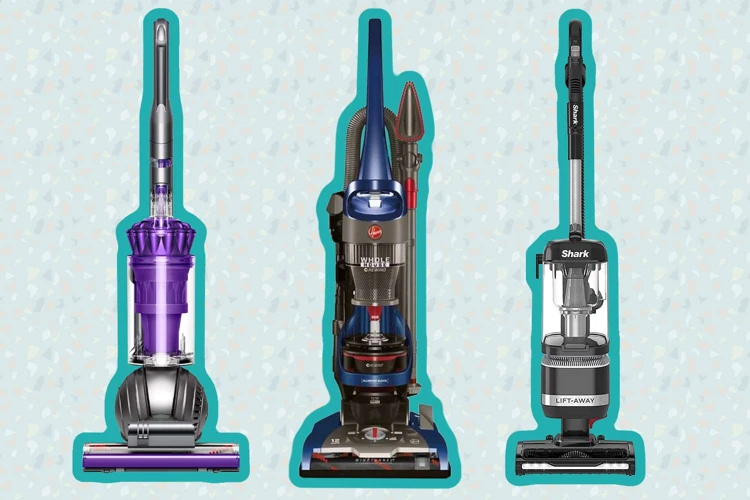
Asthma and Chronic Obstructive Pulmonary Disease (COPD) affect millions of people worldwide, often making even the simplest tasks like climbing stairs or walking to the mailbox a challenge. These respiratory conditions can have a significant impact on a person’s quality of life, causing shortness of breath, chest tightness, and coughing. For those individuals with asthma and COPD, it is essential to keep a clean and dust-free environment. In this section, we will explore asthma and COPD in greater detail, looking at the symptoms and differences between the two conditions. Additionally, we will discuss how dust and pollutants can exacerbate symptoms and why using a smart vacuum cleaner can make a difference in managing these conditions.
Symptoms Of Asthma And COPD
Asthma and chronic obstructive pulmonary disease (COPD) are respiratory conditions that can cause difficulty breathing and impact quality of life. The effects of these conditions can range from mild to severe and can even be life-threatening if left untreated. Asthma symptoms usually include shortness of breath, wheezing, chest tightness and coughing, while COPD symptoms are characterized by coughing, frequent respiratory infections, wheezing, chest tightness and shortness of breath, especially with physical activity.
Asthma and COPD symptoms can be triggered by a variety of factors, such as exposure to dust, pollen, household chemicals, tobacco smoke, air pollution and pet dander. These triggers can inflame the airways and cause symptoms to worsen, leading to exacerbations or attacks. It’s essential for individuals with asthma or COPD to identify their specific triggers and take steps to minimize exposure where possible.
One tool that can help individuals with these conditions is a smart vacuum cleaner. These vacuum cleaners are designed to be efficient and effective at capturing dust and other allergens that can trigger asthma and COPD symptoms. By investing in a quality smart vacuum cleaner, individuals can reduce their exposure to irritants and breathe cleaner air, improving their overall respiratory health.
To learn more about the advantages of smart vacuum cleaners for asthma and COPD management, check out our article on smart vacuum benefits.
Difference Between Asthma And COPD
Asthma and COPD are two chronic respiratory conditions that can cause breathing difficulties and have a negative impact on one’s quality of life. While they share some similarities, there are key differences between the two. Here are the main differences between asthma and COPD:
Causes:
Asthma is typically caused by an allergic reaction or heightened sensitivity to certain substances, such as pollen, dust mites, or pet dander. On the other hand, COPD is usually caused by long-term exposure to harmful substances like cigarette smoke, air pollution, or chemical fumes.
Symptoms:
The symptoms of asthma and COPD are somewhat similar, as both conditions can cause shortness of breath, wheezing, and chest tightness. However, asthma tends to be more episodic, with symptoms that come and go depending on exposure to triggers. COPD symptoms tend to be more constant and get worse over time.
Age of Onset:
Asthma usually develops in childhood, although it can also appear for the first time in adulthood. COPD is much more common in older adults, usually past the age of 40.
Treatment:
The treatment approach for asthma and COPD can also differ. Asthma is often managed with inhaled bronchodilators and corticosteroids, as well as lifestyle changes to avoid triggers. COPD treatment may include bronchodilators, inhaled steroids, or other medications, as well as oxygen therapy for severe cases.
It’s important to note that while asthma and COPD are different conditions, they can also occur together in some cases. This is sometimes referred to as ACOS, or asthma-COPD overlap syndrome. People with ACOS may experience symptoms of both asthma and COPD and require a tailored treatment approach.
Internal link: Smart vacuum cleaners can benefit people with both asthma and COPD by reducing the amount of dust and allergens in their homes, which can trigger symptoms.
The Impact Of Dust And Pollutants
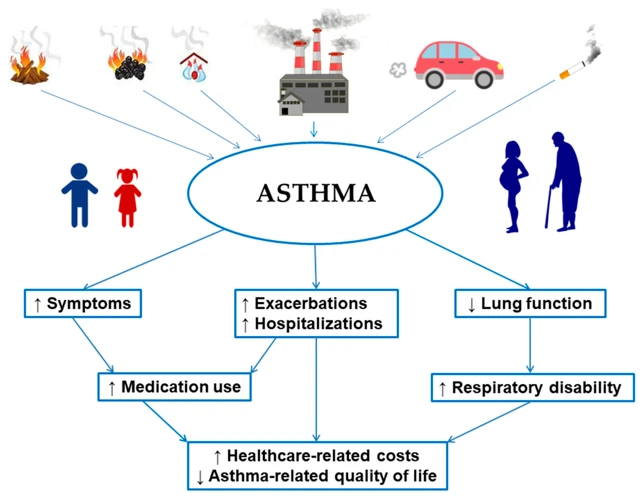
Dust and pollutants are not only a nuisance but can also exacerbate the symptoms of asthma and COPD. People suffering from these conditions are highly sensitive to triggers like dust, pollen, and pollutants. Unfortunately, even the cleanest homes are not entirely dust-free. The exposure to such irritants can cause inflammation of the airways and contribute to more frequent flare-ups. In this section, we explore the impact of dust and pollutants on respiratory health and how smart vacuum cleaners can help mitigate these risks. For those interested in saving time and effort, we have an article on smart vacuum cleaners that save time and effort.
How Dust And Pollutants Trigger Asthma and COPD
Dust and other airborne pollutants can have a significant impact on individuals suffering from asthma and COPD. Dust mites are one of the biggest triggers for asthma symptoms, as they produce waste particles that can irritate the airways. Other common allergens such as pet dander, pollen, and mold spores can also exacerbate symptoms.
By inhaling these irritants, individuals with asthma and COPD experience a range of symptoms including:
- Wheezing
- Chest tightness
- Shortness of breath
- Coughing
While avoiding these triggers altogether may be impossible, using a high-quality vacuum cleaner with advanced filtration systems can significantly reduce the amount of allergens in the air. This is where smart vacuum cleaners come in.
Smart vacuum cleaners, with their high-powered suction and advanced filtration systems, can effectively trap and remove airborne pollutants from your home. This is particularly useful for those who suffer from asthma and COPD. Smart vacuums with specialized pet hair and allergy features can stop pet hair from circulating in the air, and remove harmful dander and other allergenic particles.
Smart vacuum cleaners equipped with artificial intelligence, such as the Roomba i7+, can even learn the layout of a home and decide for itself the most efficient cleaning pattern to ensure maximum coverage. These vacuums also have a high-efficiency particulate air (HEPA) filter, which can catch particles as small as 0.3 microns.
For those who suffer from COPD, using a vacuum cleaner like the Enviro Smart Vacuum can reduce the amount of dust and particulate matter in the air. This can help reduce COPD symptoms such as coughing, shortness of breath, and tightness in the chest.
Smart vacuums can also be useful for enhancing home security. Systems such as the Wyze Robot Vacuum can map out your home and notify you if it detects abnormalities or unfamiliar objects in the space.
Individuals who suffer from asthma and COPD may find significant relief by using a smart vacuum cleaner to remove airborne pollutants from their home. By providing cleaning precision and systematization, these devices limit the quantity of dust and particles that contribute to these respiratory illnesses.
How Smart Vacuum Cleaners Can Help
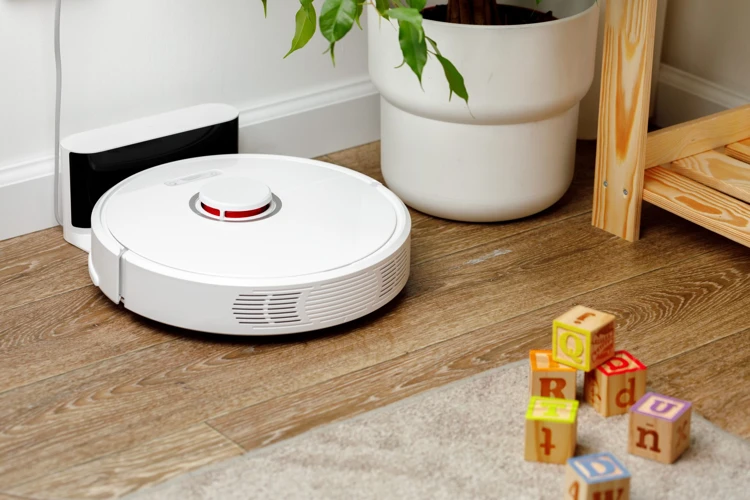
Maintaining a clean indoor environment is crucial for individuals with asthma and COPD. However, traditional vacuum cleaners can often do more harm than good by stirring up dust and pollutants, exacerbating symptoms. This is where smart vacuum cleaners come into play. These innovative cleaning devices are equipped with advanced features that make them a game-changer in the world of asthma and COPD care. Let’s explore how smart vacuum cleaners can help improve indoor air quality and alleviate symptoms of respiratory conditions such as asthma and COPD. Check out our previous article on professional cleaning with smart vacuum cleaners for more information.
Advanced Filtration Systems
Smart vacuum cleaners come equipped with advanced filtration systems that can significantly improve indoor air quality, particularly for individuals suffering from asthma and COPD. These filters are designed to trap fine particles, such as dust mites, pollen, and pet dander, reducing the amount of airborne allergens that can trigger respiratory symptoms.
One of the key components of these filtration systems is a HEPA filter, which stands for High Efficiency Particulate Air filter. These filters are made from layers of fine mesh that capture microscopic particles as tiny as 0.3 microns in size. To give a comparison, a human hair is about 50-70 microns in width. With the help of HEPA filters, smart vacuum cleaners can effectively capture and retain even the smallest and finest particles from indoor air.
But not all HEPA filters are created equal. Some vacuum cleaners come with “HEPA-like” filters that do not meet the strict standards set by the US Department of Energy for true HEPA filters. When shopping for a smart vacuum, look for official HEPA certifications and make sure the filter is rated to capture particulate matter, as well as volatile organic compounds and other airborne pollutants, if possible.
Another important feature to consider is the type of filter material, as some can be washed and reused while others need to be replaced periodically. An example of a high-quality filter material is activated carbon, which can effectively capture and neutralize unpleasant odors, chemical fumes, and cigarette smoke. Some smart vacuum cleaners also come with multi-stage filtration systems that combine HEPA filters with activated carbon filters to maximize the cleaning efficiency.
In order for these advanced filtration systems to work with optimum efficiency, it is important to keep the filters clean and replace them as needed. A clogged filter can dramatically reduce the suction power of the vacuum and compromise its cleaning performance.
Smart vacuum cleaners with advanced filtration systems, particularly those with HEPA filters, can play a significant role in managing asthma and COPD symptoms by capturing and retaining pollutants and allergens from indoor air. When purchasing a smart vacuum, it is crucial to look for certified HEPA filters and consider the type of filter material and maintenance requirements. By investing in a high-quality smart vacuum cleaner, individuals with respiratory conditions can breathe easier and enjoy a more comfortable indoor environment.
| Features | Description |
|---|---|
| HEPA Filter | A high-efficiency filter designed to capture microscopic particles as small as 0.3 microns. |
| Official Certification | Look for smart vacuums with official HEPA certifications and ratings to capture specific kinds of pollutants. |
| Different Filter Materials | Consider the pros and cons of various filter materials, including washable/reusable and disposable/replaceable options like activated carbon. |
| Multi-Stage Filtration System | Smart vacuums with multi-stage filtration systems combine HEPA filters with activated carbon for enhanced cleaning performance. |
| Maintenance Requirements | Avoid clogged filters by keeping them clean and replacing them as needed. This ensures optimal suction power and cleaning efficiency. |
Efficient Cleaning
When it comes to managing asthma and COPD, ensuring that your home is free of dust and pollutants is crucial. This is where smart vacuum cleaners come in handy, thanks to their efficient cleaning abilities. Let’s take a closer look at how these devices can make a difference.
One of the key advantages of smart vacuum cleaners is their ability to clean thoroughly and efficiently. Using powerful suction and a range of sensors and brushes, they can quickly and easily remove dirt, dust, and allergens from your floors and carpets. Additionally, some models offer advanced features that make them even more efficient, such as edge cleaning and path planning.
Here are some features that contribute to efficient cleaning of smart vacuums:
| Feature | Description |
|---|---|
| Suction Power | The higher the suction power, the more dirt and debris the vacuum can pick up. Look for a model with at least 800 to 1000 Pa for optimal results. |
| Sensors | Smart vacuums use sensors to navigate around furniture and other obstacles, ensuring that they clean the entire floor without bumping into anything. |
| Brushes | The type and quality of brushes can make a big difference in how well a vacuum cleans. Look for models with rotating brushes that can agitate dirt and debris from carpets and other surfaces. |
| Path Planning | Some smart vacuums use advanced algorithms to plan the most efficient cleaning path, ensuring that every inch of your floors and carpets is covered. |
By investing in a smart vacuum cleaner with these features, you can be confident that your home is getting the thorough and efficient cleaning it needs to minimize asthma and COPD triggers.
Scheduling and Smartphone Control
One of the most appealing features of smart vacuum cleaners is their ability to be scheduled and controlled through a smartphone app, providing convenience and ease of use like never before. Here are some of the benefits of scheduling and smartphone control:
- Customizable Cleaning Schedule: With a smart vacuum cleaner, you can easily create a personalized cleaning schedule that fits your lifestyle. You can set the device to clean your home daily or weekly, at a specified time, and even choose which rooms you want to prioritize.
- Remote Control: With the smartphone app, you can start, stop, and pause your vacuum from anywhere, even when you’re not at home. This feature is particularly useful when unexpected guests arrive, and you need to quickly vacuum the living room without being present.
- Real-time Monitoring: The smartphone app allows you to see the progress of the cleaning process in real-time, so you know exactly what has been cleaned and what still needs to be done. This feature helps you keep track of your cleaning activities and ensure that no area is left untouched.
- Smart Mapping: Some smart vacuum cleaners have the ability to create a visual map of your home through sensors and cameras. You can then use the app to see the areas that have been cleaned and those that haven’t. This feature helps to ensure that all areas are thoroughly cleaned.
Scheduling and smartphone control not only make cleaning a more effortless and customizable task but also allow you to keep track of the cleaning process and ensure that every corner of your home is free from pollutants and allergens that can trigger asthma and COPD symptoms.
Scientific Evidence
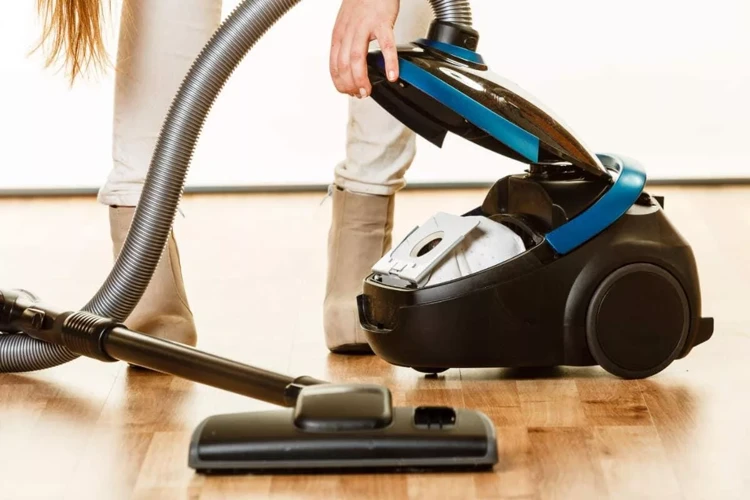
It’s natural to be skeptical when a new technology claims to provide health benefits. So, you may be wondering whether smart vacuum cleaners are truly effective in managing asthma and COPD. Fortunately, scientific research has shed light on this topic, and the results are promising. Multiple studies have shown that smart vacuum cleaners equipped with advanced filtration systems can significantly reduce the presence of indoor pollutants that trigger asthma and COPD symptoms. Let’s take a closer look at the evidence behind this revolutionary technology.
Studies On The Efficacy Of Vacuum Cleaners
Studies have shown that using a vacuum cleaner can significantly improve air quality in homes and reduce the risk of respiratory illnesses such as asthma and COPD. Here are some statistics to back it up:
- A study published in the Journal of Allergy and Clinical Immunology found that regular vacuuming with a cleaner equipped with HEPA filters reduced allergen levels by 60 percent. This decrease helped improve lung function and reduce symptoms in individuals with asthma and allergies.
- Another study published in the Environmental Science & Technology Journal found that using a vacuum cleaner with HEPA filters reduces particulate matter by 99 percent.
- In a study published in the Journal of Hospital Infection, researchers found that using a vacuum cleaner with a high-efficiency particulate air (HEPA) filter reduced the amount of infectious particles in the air by 50 percent.
- A study conducted by the University of California, Berkeley, found that vacuum cleaning effectively removes house dust by 96 percent. This removal of dust particles helps people with asthma and COPD breathe more easily.
These studies demonstrate the importance of using a quality vacuum cleaner to reduce dust, allergens, and pollutants in the air. Smart vacuum cleaners, in particular, with their advanced filtration and cleaning systems, offer an effective solution for people with asthma and COPD to improve their indoor air quality and reduce the triggers that can worsen their symptoms.
Features To Look For In A Smart Vacuum Cleaner
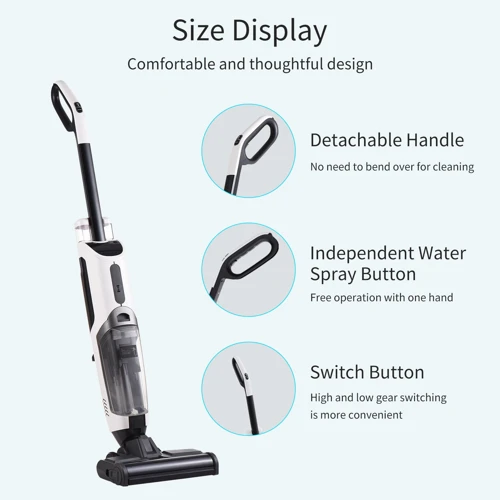
Are you considering purchasing a smart vacuum cleaner to improve the air quality in your home? With so many options available, it can be overwhelming to know what features to look for. Fear not, as we’ve compiled a list of important factors to consider before making your purchase. It’s important to invest in a vacuum that not only suits your cleaning needs but also supports your efforts in managing asthma and COPD. Let’s explore some key features you should keep in mind.
HEPA Filters
When considering a smart vacuum cleaner for managing asthma and COPD, one important feature to look for is the presence of HEPA filters. HEPA, which stands for High-Efficiency Particulate Air, filters are designed to capture even the smallest particles of dust, pet dander, pollen, and other allergens that can trigger asthma and COPD symptoms.
Here are some key benefits of HEPA filters:
| Benefits of HEPA Filters |
|---|
| Traps Small Particles: HEPA filters are designed to capture particles as small as 0.3 microns, which is smaller than many allergens and other irritants. |
| Improves Air Quality: By removing allergens and other irritants from the air, HEPA filters can improve overall air quality in your home. |
| Reduces Symptoms: By removing triggers for asthma and COPD symptoms, HEPA filters can help reduce the frequency and severity of symptoms. |
| Long-Lasting: HEPA filters are designed to last for a long time, often several years, before needing to be replaced. |
| Energy Efficient: Despite their high level of filtration, HEPA filters are energy efficient and don’t consume a lot of power. |
| Cost-Effective: While HEPA filters may cost a bit more than standard vacuum filters, they are highly effective and can save money on medical expenses by reducing asthma and COPD symptoms. |
There are many different types of HEPA filters, and some smart vacuum cleaners even have multiple filters to provide even greater filtration capabilities. When looking for a vacuum cleaner with HEPA filters, make sure to check the specifications to see what kind of filter is included and how often it needs to be replaced. It’s also important to note that while HEPA filters can be highly effective, they are not a cure-all solution and should be used in conjunction with other asthma and COPD management strategies.
Size and Weight
When it comes to selecting a smart vacuum cleaner for asthma and COPD care, one important consideration is size and weight. The ideal smart vacuum cleaner should be lightweight and portable, making it easy to maneuver around without causing any strain on the user’s body.
Size: A compact and sleek design is preferred in smart vacuum cleaners. It should be small enough to navigate around tight spaces and corners without any difficulty. If the vacuum cleaner is too bulky, it can be challenging to clean such areas, leaving dust and allergens behind.
Weight: The weight of the smart vacuum cleaner is also vital. A lightweight vacuum cleaner is easier to handle and won’t cause any strain on the user’s back, shoulders, or arms. Heavy vacuum cleaners can be difficult to push and pull around, and can also cause fatigue.
To help you make an informed choice on the size and weight of a smart vacuum cleaner, we have created an easy-to-read table outlining some of the popular models available on the market:
| Brand | Model | Weight | Dimensions (inches) |
|---|---|---|---|
| Dyson | V11 Torque Drive | 6.68 pounds | 50.63 x 9.84 x 10.28 |
| Shark | Apex UpLight Lift-Away | 10.7 pounds | 46.2 x 10.4 x 11.1 |
| iRobot Roomba | i7+ | 7.44 pounds | 13.34 x 13.34 x 3.64 |
| Eufy | RoboVac 30C | 5.95 pounds | 12.8 x 12.8 x 2.85 |
| Ecovacs | Deebot Ozmo T8 AIVI | 6.7 pounds | 13.7 x 13.7 x 4 |
As you can see, some smart vacuum cleaners weigh less than others. While a few ounces may not seem like a significant difference, it can make all the difference in the comfort and ease of use, especially for people with asthma or COPD.
Remember to select a vacuum that you can comfortably handle, especially if you plan to use it regularly. A lightweight and portable vacuum cleaner can make your cleaning routine a breeze and contribute to keeping your home free of dust and allergens.
Battery life
When looking for a smart vacuum cleaner, one of the key features to consider is battery life. This is important because a short battery life means that you will need to pause your cleaning and wait for the vacuum to charge. It can be frustrating and inconvenient, especially if you have a large house to clean.
Here are some tips to help you assess the battery life of a smart vacuum cleaner:
- Check the advertised battery life of the vacuum cleaner. This is usually listed in the product details or specifications.
- Look for customer reviews to see how long the battery lasts in real-life situations. Keep in mind that battery life can vary depending on usage and the type of flooring in your home.
- Consider purchasing a model with a removable battery. This allows you to swap out a dead battery for a fully charged one, extending your cleaning time.
- Think about your cleaning needs, and choose a vacuum with a battery that meets those needs. If you have a small apartment, a shorter battery life may suffice. However, for larger homes or if you have pets, a vacuum with a longer battery life may be necessary.
In addition to battery life, other factors to consider when choosing a smart vacuum cleaner include the size and weight, noise level, and filtration system. By considering these factors, you can choose a model that best suits your needs and helps you manage your asthma or COPD symptoms.
Noise Level
When choosing a smart vacuum cleaner to aid in asthma and COPD care, it’s essential to consider the noise level. High-volume noise can trigger asthma and COPD symptoms, causing discomfort and breathing difficulties. It’s imperative to select a vacuum cleaner with a low noise level.
To help guide you in choosing a vacuum cleaner with an adequately low noise level, we’ve compiled a list of popular models and their decibel (dB) levels in an easy-to-read html table:
| Brand and Model | Noise Level (dB) |
|---|---|
| Dyson V11 Absolute | 85 dB |
| iRobot Roomba i7+ | 68 dB |
| Shark IQ Robot Vacuum | 62 dB |
| Miele Complete C3 Marin | 64 dB |
As you can see, there is a wide range of noise levels among smart vacuum cleaners. If you’re looking for a quiet option, the Shark IQ Robot Vacuum and iRobot Roomba i7+ are excellent choices, with noise levels of 62 dB and 68 dB, respectively.
However, it’s worth noting that noise level shouldn’t be the only factor to consider when choosing a smart vacuum cleaner. If a vacuum cleaner has a low noise level but doesn’t effectively clean your floors or is inconvenient to use, it may not be the best option for your needs.
When choosing a smart vacuum cleaner for asthma and COPD care, be sure to consider both the noise level and other important features. By doing so, you’ll be able to find a high-quality vacuum cleaner that enhances your air quality and aids in managing asthma and COPD symptoms effectively.
Tips For Using Smart Vacuums
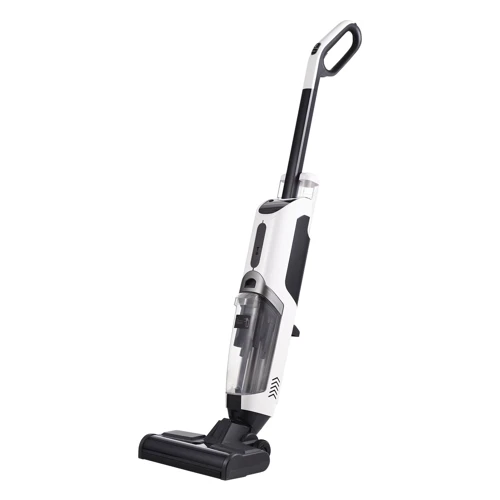
When it comes to using smart vacuum cleaners to alleviate the symptoms of asthma and COPD, there are a few important tips to keep in mind. By following these simple but effective recommendations, you can get the most out of your investment and keep your indoor air environment as clean and healthy as possible. Let’s take a closer look at some best practices for using smart vacuums to take control of your symptoms and improve your quality of life.
Stick To A Cleaning Schedule
Keeping a regular cleaning schedule is important when using smart vacuum cleaners for asthma and COPD care. Maintaining a clean environment can help reduce the amount of dust and pollutants that trigger asthma and COPD symptoms. To ensure that your smart vacuum is effectively reducing these triggers, it’s important to stick to a regular cleaning schedule.
Here are some tips to help you create a cleaning routine that works for you:
| Tips for Sticking to a Cleaning Schedule |
|---|
| 1. Create a cleaning schedule that works for you. Depending on the size of your home and the amount of foot traffic it sees, you may need to clean more or less frequently. Identify the areas of your home that require the most cleaning and prioritize those. |
| 2. Use a designated smart vacuum for asthma and COPD care. By having a specific vacuum for this purpose, you can ensure that it’s always charged and ready to use. Plus, you can track its performance and see when it’s time to replace parts or filters. |
| 3. Set reminders to clean. Use calendar reminders or alarms on your smartphone to help you remember to clean on a regular basis. |
| 4. Involve family members and roommates. Get everyone in your home involved in the cleaning process. Delegate tasks and make sure everyone knows when it’s their turn to vacuum. |
| 5. Don’t forget to clean hard-to-reach areas. Dust and pollutants can accumulate in areas that are not easily visible, such as behind furniture or under rugs. Make sure to move furniture and area rugs and vacuum these spaces as well. |
By sticking to a regular cleaning schedule and using a smart vacuum cleaner with advanced filtration systems and efficient cleaning capabilities, you can create a healthier home environment for people with asthma and COPD. This will help reduce triggers and alleviate symptoms, leading to a better quality of life.
Pick Up Visible Debris Before Cleaning
When using a smart vacuum cleaner for asthma and COPD care, it is important to pick up visible debris before cleaning in order to prevent any blockages and ensure efficient suction. This means clearing the area of any larger objects, such as toys or shoes, and picking up any loose trash or paper.
One way to make this process easier is by using designated storage bins or baskets for items that may cause debris, such as children’s toys or pet toys. This can also help with organization and prevent clutter in the home.
Table:
| Tips for Picking Up Visible Debris |
|---|
| Designate storage bins or baskets for items that may cause debris |
| Keep a small dustbin or trash bag handy for quick disposal of debris |
| Encourage family members or roommates to help with picking up debris |
| Set a reminder or alarm for picking up debris before vacuuming |
Another tip is to keep a small dustbin or trash bag nearby for quick and easy disposal of debris. This can save time and prevent distractions during the vacuuming process.
Encouraging family members or roommates to help with picking up debris can also make the process quicker and more efficient. This can be especially helpful for larger homes or areas with high traffic.
Lastly, setting a reminder or alarm for picking up visible debris before vacuuming can help make it a consistent habit and ensure that the process is not forgotten.
By implementing these tips, picking up visible debris before using a smart vacuum cleaner for asthma and COPD care can become an easy and effective practice.
Make Sure Your Vacuum Is Fully Charged
One of the most important things to keep in mind while using a smart vacuum to manage asthma and COPD is to ensure that the vacuum is fully charged. Not only will this help to ensure that your vacuum operates at maximum efficiency, but it can also help to save battery life in the long run.
How to Make Sure Your Vacuum Is Fully Charged:
| Step | Description |
|---|---|
| Step 1 | Always check your vacuum’s battery level before starting a cleaning session. |
| Step 2 | If your vacuum’s battery is low, be sure to charge it fully before starting a new cleaning session. |
| Step 3 | When charging your vacuum, be sure to use the charger that came with your device or a compatible third-party charger. Using an incompatible charger can damage your vacuum’s battery and render it useless. |
| Step 4 | Allow your vacuum to charge fully before using it again. Many smart vacuums will indicate when they are fully charged, but it’s always a good idea to leave your vacuum charging for an extra 30 minutes to ensure that the battery is completely full. |
By following these steps, you’ll be able to keep your smart vacuum operating at maximum efficiency, helping you take care of your asthma and COPD symptoms more effectively. Additionally, keeping your vacuum’s battery at full capacity can help prolong its lifespan, ensuring that it remains a valuable tool in your respiratory health toolkit for years to come.
Keep The Dustbin Empty
When it comes to using a smart vacuum cleaner to manage asthma and COPD, one important tip to keep in mind is to regularly empty the dustbin. This may seem like a small detail, but it can actually have a big impact on the effectiveness of the vacuum in reducing indoor pollutants.
Here are some reasons why keeping the dustbin empty is so important:
- Improved suction power: When the dustbin is full, the suction power of the vacuum can decrease, which means it won’t be as effective at picking up dust and other allergens. Emptying the dustbin ensures that the vacuum can maintain its full suction power, making it more efficient at cleaning your home.
- Reduced risk of allergen exposure: If the dustbin is allowed to overflow, it can release allergens and pollutants back into the air, which can exacerbate respiratory symptoms for those with asthma and COPD. By regularly emptying the dustbin, you can minimize the risk of allergen exposure and create a healthier home environment.
- Prevent clogging: A full dustbin can also lead to clogs, which can cause the vacuum to malfunction or even break down. By emptying the dustbin after each use, you can help prevent clogs from forming and extend the life of your vacuum cleaner.
In addition to these benefits, keeping the dustbin empty is also a simple and straightforward task that doesn’t take too much time or effort. By making it a habit to empty the dustbin after each use, you can ensure that your smart vacuum cleaner is operating at peak performance and doing its part to improve your indoor air quality.
Other Ways To Manage Asthma And COPD
If you or a loved one suffers from asthma or chronic obstructive pulmonary disease (COPD), you know how debilitating these conditions can be. While a smart vacuum cleaner can help reduce the amount of dust and allergens in your home, there are other ways to manage your symptoms and improve your overall respiratory health. In this section, we’ll explore some additional strategies for managing asthma and COPD, including the use of air purifiers and the importance of maintaining proper humidity levels in your home.
Using Air Purifiers
Another effective way to manage asthma and COPD symptoms is by using air purifiers. Air purifiers work by filtering out airborne pollutants and irritants, such as dust, pollen, smoke, and mold spores, from the air.
Benefits of using air purifiers:
- Reduced Exposure: Air purifiers can effectively reduce the exposure to indoor air pollutants and irritants which can trigger COPD and asthmatic symptoms.
- Cleaner environment: Air purifiers ensure that the indoor environment is clean and healthy.
- Improved sleep: Using an air purifier can help to improve the quality of sleep for people living with COPD and asthma.
When shopping for an air purifier, it is important to consider the following factors:
Efficiency: Air purifiers differ in the level of efficiency in filtering airborne pollutants. It is better to choose an air purifier with a high-efficiency particulate air (HEPA) filter which can effectively filter out even the tiny particles in the air.
Noise Level: The noise level of the air purifier can be disturbing for some people, so it is essential to choose an air purifier with low decibel levels.
Size: Air purifiers come in different sizes, and the size of the air purifier should be proportionate to the size of the room.
Filters: There are different types of filters, such as activated carbon filters, pre-filters, and HEPA filters. Consider which type of filter will work best for your specific needs.
Air purifiers can be a valuable tool in managing asthma and COPD symptoms. But, it is important to note that air purifiers are not a cure for asthma or COPD. They are simply a way to reduce exposure to airborne irritants and pollutants that can trigger symptoms. It is essential to follow the prescribed medication and treatment plans recommended by your healthcare provider.
Keeping Humidity Levels In Check
Maintaining a proper humidity level is crucial for individuals suffering from asthma and COPD. High humidity can lead to the growth of mold and mildew, which can trigger respiratory symptoms. On the other hand, low humidity levels can irritate the airways and make breathing difficult.
To prevent such occurrences, it is necessary to keep humidity levels in check. Here are some ways to do so:
- Use a hygrometer: This device can measure the amount of moisture in the air. Ideal humidity levels range from 30% to 50%. Keeping a hygrometer in your living space can help you monitor and maintain an appropriate humidity level.
- Install a dehumidifier: If your home has high humidity levels, a dehumidifier can help reduce the moisture content in the air by drawing in the excess humidity and collecting it. Ensure that the dehumidifier is cleaned regularly to eliminate any mold or mildew build-up.
- Keep water sources away: Water sources such as leaking pipes, faucets, or even plants can increase the moisture content in the air. It is crucial to fix any leaks and avoid overwatering plants to maintain a proper humidity level.
- Proper ventilation: Poor ventilation can cause the indoor air to become stagnant and humid, leading to mold and mildew growth. Opening windows and doors regularly, implementing good kitchen and bathroom ventilation, and using exhaust fans can prevent moisture accumulation and keep the air fresh.
In addition to keeping humidity levels in check, using smart vacuum cleaners with advanced filtration systems can significantly reduce the amount of dust, pollen, and other airborne pollutants, leading to better respiratory health. Along with these measures, individuals with asthma and COPD can manage their symptoms effectively and lead a healthy and active lifestyle.
Conclusion
In conclusion, it’s clear that smart vacuum cleaners can play a crucial role in managing asthma and COPD. The advanced filtration systems in these vacuums are designed to efficiently trap particles and pollutants that trigger respiratory conditions. Additionally, scheduling and smartphone control features make it easy to keep your home clean and healthy, without having to worry about aggravating your symptoms.
When selecting a smart vacuum cleaner, it’s important to look for key features such as HEPA filters, lightweight design, long battery life, and low noise levels. By adhering to a regular cleaning schedule, picking up visible debris before vacuuming, and keeping the dustbin empty, you can maximize the efficacy of your smart vacuum and protect yourself from harmful allergens.
Of course, smart vacuums aren’t the only way to manage asthma and COPD. Other strategies include using air purifiers, keeping humidity levels in check, and taking preventive measures such as avoiding tobacco smoke and air pollution.
If you or someone you know is struggling with asthma or COPD, it’s important to speak with a healthcare professional to develop a comprehensive management plan. With the right tools and strategies in place, it’s possible to live a healthy and fulfilling life, even with these chronic respiratory conditions.
Frequently Asked Questions
What is a smart vacuum cleaner?
A smart vacuum cleaner is a cleaning device equipped with advanced features such as internet connectivity, automated cleaning schedules, and smartphone control.
Can smart vacuum cleaners help in managing asthma and COPD?
Yes, smart vacuum cleaners can help manage asthma and COPD by effectively removing dust and pollutants from the air, reducing triggers of the diseases.
What is HEPA filtration?
HEPA stands for High-Efficiency Particulate Air. HEPA filtration is a type of air filtration system that can capture tiny particles as small as 0.3 microns, making it effective in filtering out allergens, dust, and other pollutants from the air.
What is the importance of advanced filtration systems in smart vacuum cleaners?
Advanced filtration systems in smart vacuum cleaners help to effectively capture allergens, pollutants, and dust, thereby reducing the risk of the triggers of asthma and COPD.
What is the recommended battery life for a smart vacuum cleaner?
The recommended battery life for a smart vacuum cleaner is between 120 to 150 minutes.
Is noise level an important feature to consider in a smart vacuum cleaner?
Yes, it is. A loud vacuum cleaner can disrupt sleep or other activities, especially if used in the bedroom, living room, or home office.
Do smart vacuum cleaners require internet connectivity to function?
No, they don’t. The internet connectivity feature in smart vacuum cleaners is optional and can be used to enable advanced features such as remote control, voice commands and integration with smart home devices.
Are there any energy-efficient smart vacuum cleaners available?
Yes, there are energy-efficient smart vacuum cleaners equipped with components such as brushless motors and energy-saving algorithms that can operate for longer with minimal power consumption.
Can air purifiers be used together with smart vacuum cleaners?
Yes, they can. Using an air purifier alongside a smart vacuum cleaner can help to further reduce airborne pollutants, allergens, and microbes, especially in areas with high outdoor air pollution or allergen levels.
Are smart vacuum cleaners affordable?
Yes, they are. There are several affordable smart vacuum cleaners available with prices ranging from $150 to $500, depending on the brand, features and advanced technologies embedded in them.

